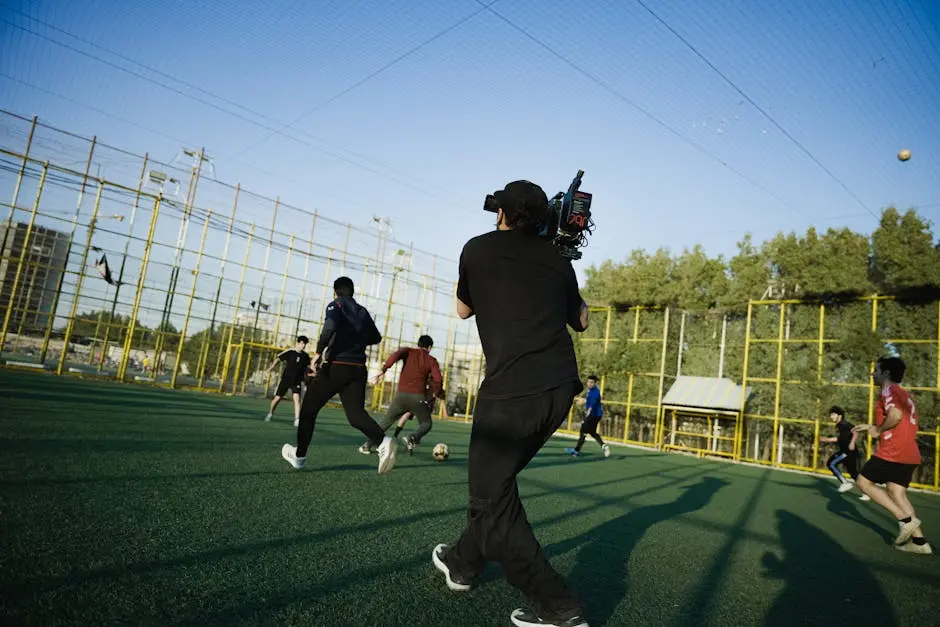Technology
New On-Campus Partnership Between Caltech and Meta Focuses Initially on Smart Wearables – Pasadena Now
Credit: Lance Hayashida/Caltech Caltech scientists are actively studying how to seamlessly integrate technology—things like sensors, actuators, and microprocessors, but also novel materials—into things that we wear. And the social media and technology company Meta Platforms, Inc. (Meta), has spent the past 10 years pushing forward the development of virtual, augmented, and mixed reality technologies, while […]


Caltech scientists are actively studying how to seamlessly integrate technology—things like sensors, actuators, and microprocessors, but also novel materials—into things that we wear. And the social media and technology company Meta Platforms, Inc. (Meta), has spent the past 10 years pushing forward the development of virtual, augmented, and mixed reality technologies, while also investigating the basic science underlying wearable technologies.
Now Caltech and Meta have formalized an agreement that will bring together the Institute’s innovative research approach in areas such as materials science, human–computer interfaces, sensing and tracking, and machine learning, with Meta research projects exploring how people interact with integrated technologies. As part of the agreement, Meta has renovated and opened a 1600 square foot research lab on campus, with a campus faculty lead, and is investing in a variety of research projects at the Institute through a grant-making fund. The new partnership will initially focus on the science underlying smart wearables but could extend to other areas of shared interest.
Chiara Daraio, the G. Bradford Jones Professor of Mechanical Engineering and Applied Physics, who is currently on leave as a Meta research scientist, leads the effort. For the past several years, she has been collaborating with Meta and has seen first-hand the opportunities that Meta has to offer in working with the Institute.
“Caltech excels at fundamental science—tackling hard, interdisciplinary questions and coming up with creative solutions,” says Daraio, also a Heritage Medical Research Institute Investigator. “Meta needs to solve precisely these kinds of deep scientific challenges, driven by the desire to build revolutionary technologies. To meet these needs, Meta brings to Caltech new intellectual challenges and a long-term vision to support foundational research and achieve breakthroughs together.”
Looking to the future, Daraio imagines that much of what we wear will become ever-more intelligent. This naturally leads to fascinating new questions for scientists: What new materials will allow us to integrate hardware technologies into wearables, while ensuring that they remain comfortable, effective, and durable? How do we make sense of inputs coming from multiple sensors to provide data that is ultimately useful to the wearer? How can we make electronic computing devices fit more seamlessly into daily life?
“These are fundamental questions, which offer plenty of space for interdisciplinary scientific inquiry and engineering advancements,” Daraio says. “This is an exciting opportunity for the Caltech community. As a campus, we are small but mighty. In terms of intellectual capabilities, curiosity, and creativity, we have a lot to offer. And, in return, we can be inspired by new tech needs, applications-driven challenges, and, of course, resources that this agreement will make available to the campus at large.”
A handful of Meta researchers moved into the new campus-based research lab at the end of March. Located in the Beckman Institute, the new research space was renovated to include workspaces, conference rooms, and two labs equipped for experimental research on sensing and haptics, the science of generating a sensation of touch through force or motions such as vibrations. Additional Meta team members are expected to arrive and begin working on campus in the coming months. Importantly, Caltech students, postdoctoral scholars, staff, and faculty members who partner with Meta will have the opportunity to work collaboratively with Meta research scientists, use Meta equipment, and intern in the Meta space on campus.
At the same time, Meta is offering calls for proposals to Caltech researchers, including for gift and sponsored research projects. There are also plans to host a joint seminar series or symposium to get students and researchers mixing and discussing challenges and opportunities that exist on the computing and experimental sides of the work.
Meta has a track record of funding Caltech research, and these new projects carry on that tradition.
One of the Meta-funded projects is led by Domniki Asimaki, professor of mechanical and civil engineering, along with Daraio and Kaushik Bhattacharya, the Howell N. Tyson, Sr., Professor of Mechanics and Materials Science. They are working to understand how ultrasound waves propagate on the skin, especially when a force or pulse is applied. “Studies like ours can help us better understand how to use ultrasound tests to interpret touch signals,” Asimaki says.
In another Meta-funded project, Wei Gao, professor of medical engineering, is developing the next generation of emotionally intelligent wearables that combine soft bioelectronics with adaptive haptic interfaces.
“Support from Meta is accelerating the translation of physiological insights into immersive, therapeutic augmented reality experiences that are both personalized and scalable,” says Gao, who is also a Heritage Medical Research Institute Investigator and a Ronald and JoAnne Willens Scholar.
Partnering with Industry
In recent years, Caltech has sought to expand interactions with industry to further the impact, development, and reach of fundamental science research in areas where there is a strong match between the Institute’s work and a company’s pursuits, says Fred Farina, Caltech’s chief innovation and corporate partnerships officer. “This collaboration with Meta is a good example of this type of partnership. We’re interested in fundamental research and pushing the boundaries of knowledge, and they’re obviously interested in bringing novel technologies and products to the marketplace,” he says. “We’re also interested in impact in the world and society through these new products and services. And to have that impact, we need to partner with industry.”
The new partnership was designed to be able to quickly respond as new questions arise from the research. The collaboration creates an umbrella framework that covers multiple research areas, effectively streamlining the process to create sponsored projects between Caltech and Meta moving forward. “Hopefully, when there are mutual interests that spark an idea, it can very quickly turn into a collaboration and project,” Daraio says. “There is a lot of enthusiasm on both sides of this agreement.”
Technology
Microsoft Closes Pakistan Office, Big Embarrassment As Global Firms Lose Confidence In Local Market: Reports
Microsoft has officially shut down its office in Pakistan, marking a significant development in the country’s tech sector, as reported by Dawn. The move, which sparked speculation on social media, was first brought to public attention by a LinkedIn post from Jawad Rehman, the former head of Microsoft Pakistan. Citing insider information, he claimed the […]

Microsoft has officially shut down its office in Pakistan, marking a significant development in the country’s tech sector, as reported by Dawn. The move, which sparked speculation on social media, was first brought to public attention by a LinkedIn post from Jawad Rehman, the former head of Microsoft Pakistan. Citing insider information, he claimed the tech giant had “officially closed its operations” in the country. While Microsoft maintained a small on-ground presence in Pakistan until recently, most of its operations were already being managed by foreign offices and local partners, according to Dawn.
Responding to Dawn’s queries, a Microsoft spokesperson confirmed the closure, stating, “We will serve our customers through both our strong and extensive partner organisation, and other closely located Microsoft offices. We follow this model successfully in several other countries around the world.” According to the report, the decision is part of Microsoft’s global restructuring efforts and broader transition towards artificial intelligence (AI) and Software-as-a-Service (SaaS) business models.
ALSO READ: Pakistan Has ‘No Objection’ To Extraditing Those Wanted By India: Bilawal Bhutto’s Big Remarks With A Catch | DEETS
Earlier this week, Microsoft announced a four per cent reduction in its global workforce, amounting to nearly 9,000 job cuts out of 2,28,000 total employees, following earlier layoffs in May. The Ministry of IT and Telecommunications, in a statement cited by Dawn, clarified that this should not be seen as Microsoft “exiting” Pakistan, but rather a shift to a cloud-based, partner-led model consistent with evolving industry standards. Technology expert Habibullah Khan explained to Dawn that as companies move from on-premise to SaaS models, physical presence in local markets becomes less necessary.
ALSO READ: Microsoft Slashes 4% Of Global Staff In Major Restructuring Move
He added that Microsoft’s closure in Pakistan is aligned with this shift and is part of a global trend, not a commentary on Pakistan’s tech landscape. Dawn also noted that other multinationals, such as Careem, have recently announced scaling back or ceasing operations in Pakistan, though Khan emphasised Microsoft’s move is more about cost-efficiency and strategy, not instability.
(With inputs from agency)
Technology
Despite rumors, Lionel Messi not denied Catholic wedding
Lima, Peru, Jun 30, 2017 / 16:05 pm An Argentine diocesan official has clarified that the local archbishop did not deny a sacramental Catholic wedding to Argentinian soccer player Lionel “Leo” Messi and his girlfriend, Antonella Roccuzzo. Rather, the archbishop forbid that a Catholic wedding for the couple be celebrated in a casino chapel, per Church […]

Lima, Peru, Jun 30, 2017 /
16:05 pm
An Argentine diocesan official has clarified that the local archbishop did not deny a sacramental Catholic wedding to Argentinian soccer player Lionel “Leo” Messi and his girlfriend, Antonella Roccuzzo.
Rather, the archbishop forbid that a Catholic wedding for the couple be celebrated in a casino chapel, per Church norms.
Some reports about the couple’s wedding, such as those from the international sports media company AS, had claimed that “The Archbishop forbids Messi and Antonella to marry in the Church.”
However, the Episcopal Delegate of Communication for the Archdiocese of Rosario, Fr. Rubén Bellante, told CNA that “neither the family of Messi nor the bride asked for a place in any parish in the city of Rosario, nor in the Cathedral either.”
“At no time did Archbishop Eduardo Eliseo Martín deny the possibility of the Sacrament of Marriage,” he said.
Messi, star of Barcelona FC soccer team and one of the best players in the world, had a civil marriage ceremony at the City Center Casino Complex, south of Rosario, Argentina on June 30 with 260 guests. The wedding was attended by well-known soccer figures and celebrities (such as Shakira) from various parts of the world.
Messi met Antonella when he was just 5 years old, but officially their relationship started in 2008. The couple has two children: Thiago, age 4, and Mateo, age 1.
The archbishop intervened in the Messi’s wedding only when he was made aware that the couple was planning to construct a chapel in a casino and to have a priest facilitate the ceremony, Fr. Bellante said.
The Archbishop banned the priest from facilitating a marriage at the casino. This is in keeping with Church tradition, as it is rare for the Church to approve requests for a Catholic marriage ceremony outside of a Catholic church.
Fr. Bellante added that Archbishop Martin suggested that a sacramental marriage for Messi may have been possible in a private house, if such a thing had been requested and were necessary for reasons such as security.
However, Messi himself never made requests to any parish in the archdiocese for a sacramental marriage, the priest said.
Fr. Bellante added that Archbishop Martín “would be happy” to provide Messi with the Sacrament of Marriage if it were requested and held in an approved place.
“(T)he doors remain open and the truth is that the archbishop told me yesterday: If, when they return to Rosario next year for their vacations…want to receive the Sacrament of Marriage, it would be offered with pleasure,” he said.
Technology
Fitness, Health, and Smart Tech
Australia Wearables Market The latest report by IMARC Group, titled “Australia Wearables Market: Industry Trends, Share, Size, Growth, Opportunity and Forecast 2025-2033,” offers a comprehensive analysis of the Australia wearables market growth. The report also includes competitor and regional analysis, along with a breakdown of segments within the industry. The Australia wearables market size reached […]
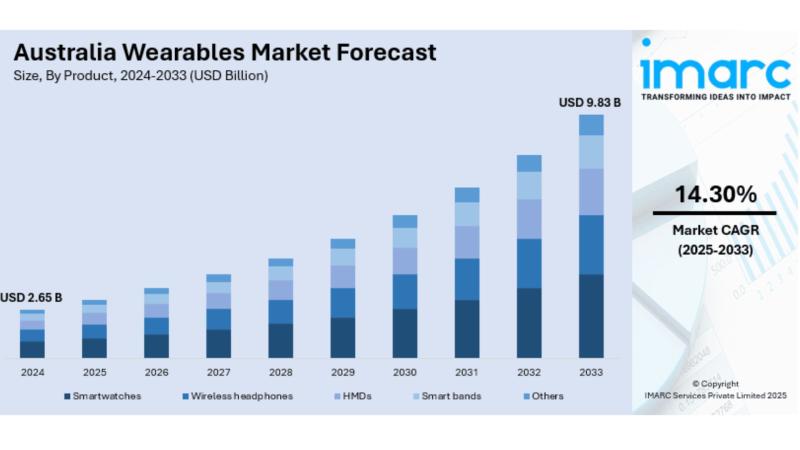

Australia Wearables Market
The latest report by IMARC Group, titled “Australia Wearables Market: Industry Trends, Share, Size, Growth, Opportunity and Forecast 2025-2033,” offers a comprehensive analysis of the Australia wearables market growth. The report also includes competitor and regional analysis, along with a breakdown of segments within the industry. The Australia wearables market size reached USD 2.65 Billion in 2024. Looking forward, IMARC Group expects the market to reach USD 9.83 Billion by 2033, exhibiting a growth rate (CAGR) of 14.30% during 2025-2033.
Report Attributes:
Base Year: 2024
Forecast Years: 2025-2033
Historical Years: 2019-2024
Market Size in 2024: USD 2.65 Billion
Market Forecast in 2033: USD 9.83 Billion
Market Growth Rate 2025-2033: 14.30%
For an in-depth analysis, you can refer to a sample copy of the report:
https://www.imarcgroup.com/australia-wearables-market/requestsample
Australia Wearables Market Overview
• The Australia wearables market is growing quickly because more people are caring about their health, tracking fitness, and using smart tech in their everyday lives.
• People are buying smartwatches, fitness bands, and health trackers to keep an eye on how much they move, their heart rate, sleep patterns, and stress levels.
• These devices use smart sensors and AI to give accurate health information.
• The use of IoT and 5G is making these wearables better connected, allowing data to be shared in real time.
• This helps with early health prevention and allows doctors to monitor patients from a distance.
• Wearables are becoming popular in care for older adults, with features like fall detection, emergency alerts, and medical sensors that help them live independently and connect with telehealth services.
• Many Australians who care about fashion are also choosing wearables as stylish accessories.
• Brands are creating special edition models and working with designers to mix tech with fashion.
Key Features and Trends of Australia Wearables Market
• Fitness and wellness devices are becoming more popular, especially because insurance companies are offering rewards to people who consistently monitor their health information.
• There is also growth in products designed for older adults, with features like easier controls, bigger screens, and better connections to healthcare professionals.
• Fashion and high-end brands are now creating stylish, personalized wearables that attract younger, fashion-conscious customers.
• Wearables are also improving through services like monthly subscriptions, smart analysis using artificial intelligence, and teamwork with phone companies.
• More attention is being paid to protecting personal data and keeping wearables secure, which helps people feel more confident about using these devices.
Growth Drivers of Australia Wearables Market
• More people are becoming aware of their health and want to track their body metrics as they happen.
• New technologies in sensors, artificial intelligence, and internet connections are making this possible.
• More hospitals and healthcare providers are offering remote care and monitoring options.
• Many companies are using wearable devices to help employees stay healthy and work more efficiently.
• Consumers are liking wearables that look good, have many features, and can be customized to fit their needs.
Browse Full Report with TOC & List of Figures:
https://www.imarcgroup.com/australia-wearables-market
Innovation & Market Demand of Australia Wearables Market
• Device makers are launching modular, rugged, and secure wearables to meet diverse user needs.
• Integration with health-tech platforms and subscription services is driving recurring revenue and user engagement.
• Hybrid wearables, combining classic aesthetics with smart features, are gaining popularity among style-conscious users.
• Partnerships with health insurers and corporate wellness programs are incentivizing wearable adoption.
• The market is responding to demand for medical-grade, easy-to-use devices for seniors and chronic disease management.
Australia Wearables Market Opportunities and Challenges
• Ongoing innovation in health tracking, connectivity, and design is creating new market opportunities.
• Ensuring data privacy and cybersecurity is essential for consumer confidence.
• Competition among global and local brands is intensifying, driving continuous product differentiation.
• Educating consumers on the benefits and safe use of wearables is crucial for sustained adoption.
• Adapting to fast-evolving technology and consumer preferences requires agility and investment.
Australia Wearables Market Analysis
• Smartwatches, fitness trackers, ear-worn devices, and head-mounted displays are leading product categories.
• Both online and offline channels are important, with e-commerce gaining share due to convenience and variety.
• Regional demand is highest in New South Wales, Victoria, and Queensland, reflecting population density and tech adoption.
• The market is maintaining strong growth momentum, supported by innovation, lifestyle changes, and expanding use cases.
Australia Wearables Market Segmentation:
By Product:
• Smartwatches
• Wireless Headphones
• Head-Mounted Displays (HMDs)
• Smart Bands
• Others
By Distribution Channel:
• Online
• Offline
By Region:
• Australia Capital Territory & New South Wales
• Victoria & Tasmania
• Queensland
• Northern Territory & Southern Australia
• Western Australia
Australia Wearables Market News & Recent Developments:
• October 2024: Samsung launched the Galaxy Ring in Australia, debuting advanced wellness tracking and personalized insights.
• December 2024: Apple’s AirPods Pro 2 received approval as medical devices in Australia, enabling use as hearing aids and for hearing tests.
Australia Wearables Market Key Players:
• Apple
• Samsung Electronics
• Fitbit (Google)
• Garmin
• Huawei
• Fossil Group
• Sony
• Xiaomi
• Amazfit
• Bose
Key Highlights of the Report:
1. Market Performance (2019-2024)
2. Market Outlook (2025-2033)
3. COVID-19 Impact on the Market
4. Porter’s Five Forces Analysis
5. Strategic Recommendations
6. Historical, Current and Future Market Trends
7. Market Drivers and Success Factors
8. SWOT Analysis
9. Structure of the Market
10. Value Chain Analysis
11. Comprehensive Mapping of the Competitive Landscape
Note: If you need specific information that is not currently within the scope of the report, we can provide it to you as a part of the customization.
Ask analyst for your customized sample:
https://www.imarcgroup.com/request?type=report&id=32252&flag=E

Q1: What is driving the growth of the Australia wearables market?
A: Health awareness, fitness tracking, technological innovation, and demand for fashionable, multifunctional devices are key growth drivers.
Q2: Which product segments are most popular?
A: Smartwatches, fitness trackers, ear-worn devices, and head-mounted displays lead the market.
Q3: How are wearables used in elderly care?
A: They provide fall detection, health monitoring, emergency alerts, and integration with telehealth services.
Q4: What trends are shaping product development?
A: Fashion-forward design, AI-powered analytics, and integration with health-tech platforms are leading trends.
Q5: Who are the major players in the Australia wearables market?
A: Leading companies include Apple, Samsung, Fitbit, Garmin, Huawei, Fossil, Sony, Xiaomi, Amazfit, and Bose.
Contact Us:
134 N 4th St. Brooklyn, NY 11249, USA
Email: sales@imarcgroup.com
Tel No: (D) +91 120 433 0800
United States: +1-631-791-1145
About Us:
IMARC Group is a leading market research company that provides management strategy and market research worldwide. We partner with clients in all sectors and regions to identify their highest-value opportunities, address their most critical challenges, and transform their businesses. Our solutions include comprehensive market intelligence, custom consulting, and actionable insights to help organizations make informed decisions and achieve sustainable growth.
This release was published on openPR.
Technology
How to get the most from your AI fitness coach
Have you met your new AI fitness coach yet? If not, they’re out there waiting for you, in whatever app or device you choose. If you buy into the hype, your new AI personal trainer will be ready and willing to give you the advice and workout plans you need, not to mention solving all […]

Have you met your new AI fitness coach yet? If not, they’re out there waiting for you, in whatever app or device you choose. If you buy into the hype, your new AI personal trainer will be ready and willing to give you the advice and workout plans you need, not to mention solving all your fitness issues in one fell swoop.
Yeah, right.
If there’s one thing we’ve all learned about AI in the last couple of years, it’s that it comes in many flavors. Good and bad. Straightforward and duplicitous. Complete and sketchy. As someone who has worked in tech and written about AI, my approach has always been to dig in and understand how it works, its strengths, and how to address its limitations. So let’s go there.
The AI fitness info
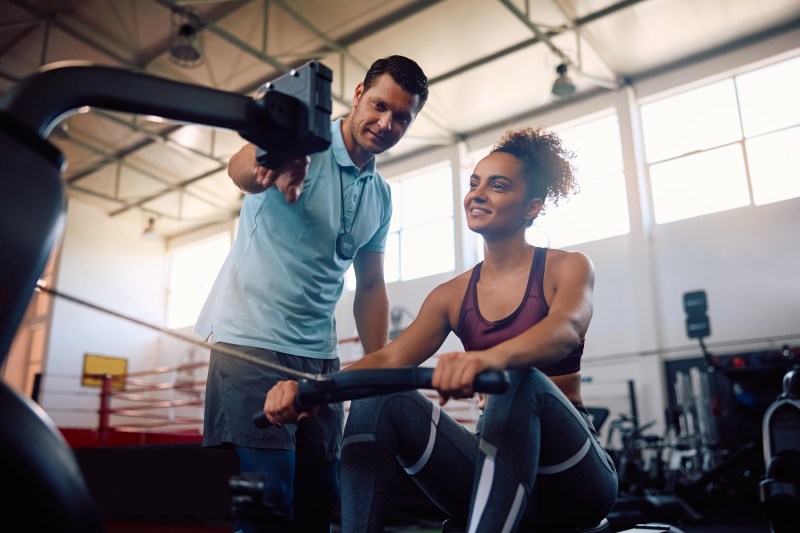
Any investigation of AI-based fitness coaching begins with the quality of the information it gathers. For fitness executives like Jonathan Shottan, the Chief Product and Content Officer of Tonal, the goal is to use AI fitness information to create what he calls “training modalities” like Pilates. The idea is to give Tonal trainers complete information they can use with both elite athletes and ordinary folks looking to improve their fitness level.
“Each new modality we introduce unlocks new types of movement patterns, data streams, and user behaviors,” Shottan explains.
That means gathering information on various lifestyles to understand the components of fitness, such as daily recovery, as well as covering different demographics, e.g., beginners and aging adults. The idea is to build what Shottan calls a “digital twin” for every existing Tonal member, and to have that twin become more complete, fitness-wise, for each new member.
How you can use this AI fitness information
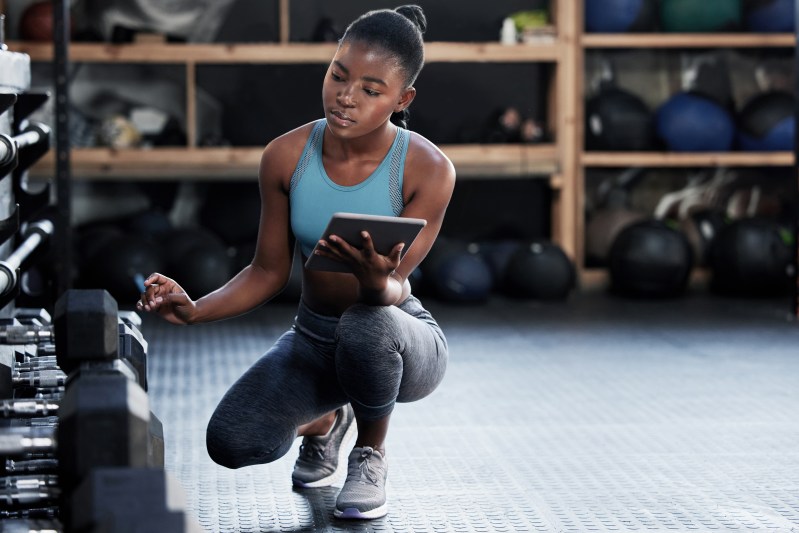
While the information and data set Shottan comes up with might be proprietary to Tonal, that doesn’t mean you can’t follow your own versions of that process from whatever app you choose.
You, too, can build your own digital twin and get recommendations from any number of fitness apps that incorporate AI coaching capability. Whether it’s Fitbod or Jefit for strength training or Runna or TrainAsOne for running, you can find an app that offers coaching in the form of workout and fitness plans, along with recommendations.
The key to getting those recommendations right is the quality of your questions and prompts. To get an idea of how this works, let’s come up with some sample questions in a couple of basic areas.
Strength training. It’s laudable to want to get stronger, but do you have the right plan in place to do it? Are you looking to build a stronger core or add weight to your lifting program? Working with dumbbells, machines, or from a bench? Are you performing the correct number of reps, and are you targeting all the necessary muscle groups?
Speed and agility. If you’re a distance runner or you have specific speed goals, the questions and prompts change considerably. Are you focusing on HIIT training, or do you have weekly mileage goals? Working too hard? Adding in the right amount of recovery?
These questions may be basic, but if your questions and prompts are off base, you won’t get the answers you need to improve. Similarly, you need to formulate the right prompts in areas like recovery, sleep quality, and nutrition, which is where the link to your trainer reenters the picture.
Using AI to make workout adjustments with your trainer

While it might seem like AI fitness coaches have the chops to replace their real-life counterparts, that’s a bit of an illusion. Clayton Kim, the CTO and co-founder of Flykitt, has helped build an app designed to get a great workout while traveling, but he sees the basic role of a trainer remaining intact.
“Half of the job of a good coach is to help their athlete make real, tangible progress over the course of months and years,” Kim states. AI coaches can excel at this, he indicates, because they can provide both basic fitness goals and motivators.
“But buy-in is key,” he adds. “The creation of a tailored program based on assessment and goals is the easiest piece for AI to do, and a good coach adapts the program based on the athlete’s abilities and how they are performing day-to-day.”
It’s important to remember that any training plan set up by an AI fitness coach represents a starting point, just like it would be for a celebrity trainer or the trainer from your local gym. The evolution of a training plan is what separates the quality of the coaching, and it’s really all about making the right adjustments.
“A good trainer will make these adjustments for you, but if you can’t access a person, AI can be good at modifying if it has the data it needs,” Kim says. “You can select a mobility workout versus a high-intensity workout when you’re not feeling a hundred percent. You can also indicate how recovered you are, so that’s another great way to get the workout you need that day, even if you don’t want to change styles.”
Do you still need a real personal trainer?

Given the way AI fitness coaches can fill in the gaps and help you make adjustments, it’s fair to ask if you can ditch your personal trainer and save a few bucks in the process. For Kim, the answer is an emphatic “no.”
“The human impact of a coach cannot be underestimated,” he says. “Just by having another human being physically present or holding you accountable, it makes a tremendous difference in how well you stick to your program, especially in the long term.”
What AI does, Kim adds, is mimic the tricks of the trade that coaches use, along with some of the rules of thumb, guidelines, and strategies. It’s also especially appealing to both Gen Z and Gen Alpha, Kim says, because there’s “a much, much higher affinity to casually talking to an AI.”
Realistic expectations and the future of AI fitness coaches

From entertainment to the workplace, any discussion of AI tends to focus on the future, both in the long and short term, and fitness is no exception. It won’t change the world right away, but it’s carving out a significant role.
“I don’t see AI completely replacing the human touch, [but] virtual fitness coaches have great potential to help trainers manage their client loads, continue progress outside of the gym, or maintain fitness goals while traveling or outside of a normal routine,” Kim summarizes.
“The same way physical therapists have started to implement AI to help their clients complete assignments in between sessions, for example, AI fitness coaches can be a complement for those who still want that in-person touch.”
The future, though, looks far different for AI fitness coaches. “I expect to see a live, vision-powered coach coming onto the market soon,” Kim predicts. “Gyms will start integrating AI programs into their apps, and some will start providing live form feedback at various exercise stations. Expect to see cameras popping up in gyms because it’s hard to use your phone.”
That, in turn, will likely lead to in-person encounters with a coach that isn’t necessarily a flesh-and-blood counterpart.
“Eventually, AI coaches will become avatars you can FaceTime call through your workout,” Kim says, “giving you live updates and motivation as you go. Or with cameras in the gym, you can reach out when you need form assists or changes to your plan.”
Technology
Artificial Intelligence in Sports Market Size, Share Growth
Artificial Intelligence in Sports Market The Artificial Intelligence in Sports market is transforming the way athletic performance, fan engagement, and operational efficiencies are managed. Leveraging advanced AI technologies, this industry is witnessing rapid innovation, significantly impacting sports analytics, injury prevention, and personalized training solutions. Market Size and Overview The Global Artificial Intelligence in Sports Market […]


Artificial Intelligence in Sports Market
The Artificial Intelligence in Sports market is transforming the way athletic performance, fan engagement, and operational efficiencies are managed. Leveraging advanced AI technologies, this industry is witnessing rapid innovation, significantly impacting sports analytics, injury prevention, and personalized training solutions.
Market Size and Overview
The Global Artificial Intelligence in Sports Market size is estimated to be valued at USD 7.73 billion in 2025 and is expected to reach USD 39.65 billion by 2032, exhibiting a compound annual growth rate (CAGR) of 26% from 2025 to 2032. This robust market growth reflects rising adoption across professional sports, e-sports, and fitness sectors, driven by increasing demand for data-driven performance enhancements and immersive fan experiences. The market report highlights expanding investments in AI-enabled wearables and AI-powered camera systems as critical contributors to the accelerating market revenue.
Request Sample Copy of Research Report: https://www.coherentmarketinsights.com/insight/request-sample/7184
Actionable Insights
– Production Capacity: Major market players increased AI-powered wearable production capacity by over 40% in 2024 due to high demand among athletes and fitness enthusiasts.
– Pricing Trends: Dynamic pricing of AI analytics platforms showed an average annual decrease of 5%, facilitating wider adoption across mid-tier sports franchises.
– Exports and Imports: Asia-Pacific recorded a 35% surge in exports of AI sports analytics solutions in 2025, primarily to North America and Europe.
– Use Cases: AI in athlete injury prevention platforms saw a 28% growth in deployment across professional football leagues in 2024, leading to measurable decreases in player downtime.
– Nano-Level Indicators: Micro-segmentation revealed that AI-enabled fan engagement tools yield 22% higher average revenue per user (ARPU) in digital broadcasting sectors.
Growth Factors
– Accelerated deployment of machine learning algorithms in player scouting and performance optimization resulted in a 32% efficiency improvement in 2024.
– Emergence of VR and AR integrations with AI for enhanced fan experiences pushed market growth, with over 50 million users engaging in AI-driven sports simulators worldwide by mid-2025.
– Increased collaboration between AI providers and professional leagues led to a deeper integration of AI in tactical decision-making, driving business growth notably in European football circles.
Market Trends
– The shift towards predictive analytics for injury risk management is a dominant market trend observed in 2024-2025. Several clubs reduced injury rates by up to 25% using AI-driven data models.
– Use of natural language processing (NLP) to analyze fan sentiment and customize live commentary is expanding rapidly, improving fan retention by 15% year-over-year.
– Seamless AI integration with IoT devices for real-time athlete monitoring is expected to redefine game-day operations by 2030, with prototypes showing 98% accuracy in physiological data capture.
Limited Period Offer | Buy Now, Get Up to 25% Off on Research Report @ https://www.coherentmarketinsights.com/insight/buy-now/7184
Key Takeaways
By Region:
– North America: Leads in AI sports technology adoption, due to extensive funding in sports tech startups and professional leagues’ innovation initiatives.
– Latin America: Focuses on AI for football analytics and fan engagement platforms targeting expanding digital audiences.
– Europe: Drives AI-powered tactical and training analytics, with regulatory support fostering advanced R&D.
– Asia Pacific: Emerges as a manufacturing and export hub for AI-enabled wearables and sports equipment.
– Middle East: Invests heavily in smart stadium projects leveraging AI to enhance spectator experience.
– Africa: Sees growing AI adoption in grassroots sports development programs to identify and nurture talent.
By Segment:
– Technology Type:
– AI-driven wearables: Widely used for real-time biometrics and injury prevention (e.g., heart rate and motion sensors in basketball training).
– AI analytics software: Critical for performance analysis and opponent scouting in professional leagues.
– AI-enhanced broadcasting tools: Improve viewer engagement via personalized content delivery.
– Application:
– Athlete analytics: Enables optimized training regimes and biomechanical assessments.
– Fan engagement: Combines AI with AR/VR to revolutionize sports viewing experiences.
– Operational management: Adopts AI for ticketing, crowd control, and stadium security enhancements.
Key Players
– Amazon Web Services, Inc.
– Apple Inc.
– Catapult Group International Ltd
– Fujitsu Limited
– Google LLC
– IBM Corporation
– Intel Corporation
– Microsoft Corporation
– Movella Holdings Inc.
– NEC Corporation
– Oracle Corporation
– Perform Group
– Qualcomm Technologies, Inc.
– Salesforce.com Inc.
– SAS Institute, Inc.
Competitive Strategies
– Several market companies like Microsoft Corporation and IBM Corporation have invested significantly in cloud-based AI sports analytics platforms, increasing user base penetration by 40% through strategic partnerships with major leagues.
– Google LLC accelerated innovation by acquiring niche AI startups specializing in computer vision for sports event summarization, yielding a 30% improvement in video analysis accuracy.
– Amazon Web Services emphasized scalable infrastructure, enabling smaller market players and teams to access sophisticated AI tools, expanding the overall Artificial Intelligence in Sports market share.
Limited Period Offer | Buy Now, Get Up to 25% Off on Research Report @ https://www.coherentmarketinsights.com/insight/buy-now/7184
FAQs
1. Who are the dominant players in the Artificial Intelligence in Sports market?
The dominant players include Amazon Web Services, Apple Inc., Google LLC, IBM Corporation, and Microsoft Corporation, spearheading innovation via cloud AI platforms, wearables, and advanced analytics solutions.
2. What will be the size of the Artificial Intelligence in Sports market in the coming years?
The market size is projected to increase from USD 7.73 billion in 2025 to USD 39.65 billion by 2032, with a CAGR of 26%, driven by expanding applications and technological advancements.
3. Which end-user industry has the largest growth opportunity?
Professional sports leagues, including football, basketball, and e-sports, represent the largest growth opportunity due to their adoption of AI-powered performance and fan engagement tools.
4. How will market development trends evolve over the next five years?
Trends point towards greater use of AI in predictive injury management, AI-augmented broadcasting, and integration with IoT devices for real-time athlete monitoring and operational efficiency.
5. What is the nature of the competitive landscape and challenges in the Artificial Intelligence in Sports market?
The competitive landscape is highly dynamic, characterized by constant innovation and strategic acquisitions; challenges include data privacy concerns and the high cost of AI technology deployment.
6. What go-to-market strategies are commonly adopted in the Artificial Intelligence in Sports market?
Market players typically combine strategic partnerships with sports franchises, acquisition of AI startups, and development of scalable cloud solutions to broaden market penetration and enhance market revenue streams.
Author of this marketing PR:
Alice Mutum is a seasoned senior content editor at Coherent Market Insights, leveraging extensive expertise gained from her previous role as a content writer. With seven years in content development, Alice masterfully employs SEO best practices and cutting-edge digital marketing strategies to craft high-ranking, impactful content. As an editor, she meticulously ensures flawless grammar and punctuation, precise data accuracy, and perfect alignment with audience needs in every research report. Alice’s dedication to excellence and her strategic approach to content make her an invaluable asset in the world of market insights.
Coherent Market Insights Pvt Ltd,
533 Airport Boulevard,
Suite 400, Burlingame,
CA 94010, United States
About Us:
Coherent Market Insights leads into data and analytics, audience measurement, consumer behaviours, and market trend analysis. From shorter dispatch to in-depth insights, CMI has exceled in offering research, analytics, and consumer-focused shifts for nearly a decade. With cutting-edge syndicated tools and custom-made research services, we empower businesses to move in the direction of growth. We are multifunctional in our work scope and have 450+ seasoned consultants, analysts, and researchers across 26+ industries spread out in 32+ countries.
This release was published on openPR.
Technology
10 Must-Know Insights in Sports Journalism Today – Landon Buford.com
In the fast-paced world of sports journalism, staying updated with the latest trends and insights is essential. Whether you’re a budding journalist or a seasoned veteran, understanding the evolving landscape can greatly enhance your storytelling and reporting skills. This blog will walk you through ten crucial insights that shape sports journalism today. 1. The Rise […]
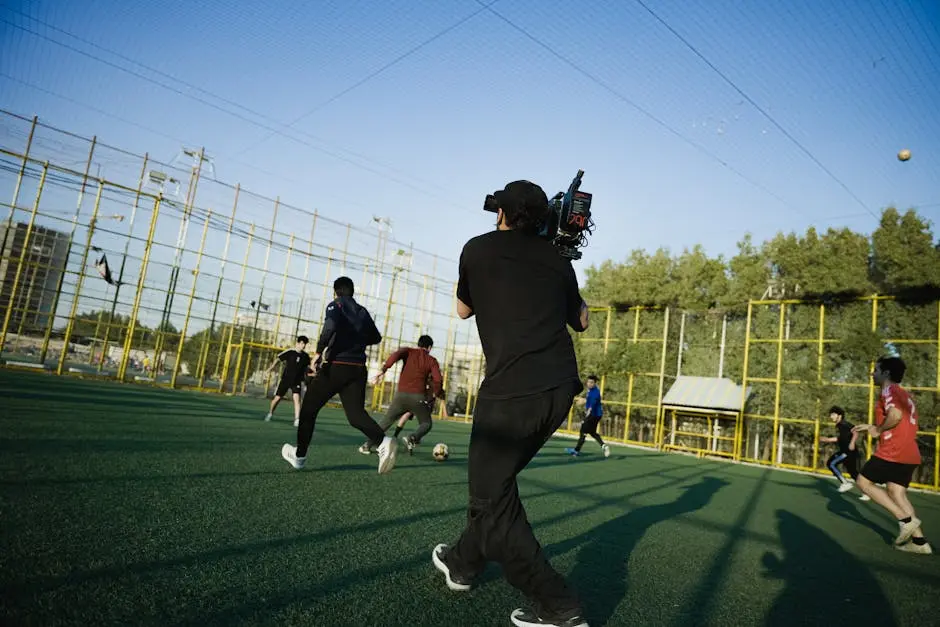
In the fast-paced world of sports journalism, staying updated with the latest trends and insights is essential. Whether you’re a budding journalist or a seasoned veteran, understanding the evolving landscape can greatly enhance your storytelling and reporting skills. This blog will walk you through ten crucial insights that shape sports journalism today.
1. The Rise of Digital Media
With the rise of social media and online platforms, sports journalism has shifted dramatically. Traditional outlets must now compete with instant news and commentary found online. These changes have empowered fans, allowing them to engage with content and express their opinions in real time.
In this digital age, journalists have to be quick on their feet. The pressure to report swiftly can sometimes overshadow the need for accuracy, and balancing these two can be a daunting task. Yet, it’s this very immediacy that has transformed how stories are told. Embracing multimedia tools can amplify the reach of a single story, tapping into a diverse audience on various platforms.
In other words, while the landscape may be competitive, it also offers journalists unprecedented opportunities to innovate and connect directly with their audience. The key lies in understanding how to navigate these waters while maintaining the integrity of the journalism profession.
2. Data-Driven Reporting
Numbers and analytics play a crucial role in storytelling today. Understanding statistics can help journalists create more engaging narratives. In an era where data is abundant, the challenge is not just to collect it but to interpret it in ways that resonate with readers.
Incorporating stats into articles can offer insight that captivates audiences, but it requires a balance. The storytelling aspect should not overshadow the numbers. Instead, reporters must find ways to weave statistics into their narratives seamlessly, using them to support compelling stories about athletes and teams.
3. The Importance of Multimedia
Incorporating videos, podcasts, and graphics into reporting enhances the story and attracts a wider audience. We live in a visual world, and readers are hungry for content that is not only informative but also engaging.
For instance, a well-crafted video breakdown of a game-winning play can often convey emotions and dynamics that words alone cannot. Furthermore, podcasts have surged in popularity, offering deeper dives into topics that allow for nuanced discussions. These formats shouldn’t just be add-ons; they should be integral to how stories are told in the digital age.
4. Embracing Audience Interaction
Engaging with fans and readers through social media and live Q&As fosters a community and keeps the dialogue open. This interaction allows journalists to receive immediate feedback and understand what resonates with their audience.
Moreover, it humanizes the journalist as readers connect not just with their work but with the person behind the story. This engagement can also inspire more informed articles as journalists receive insights and opinions that shape future content.
5. Ethical Considerations in Reporting
Maintaining integrity is vital. Journalists must navigate the challenges of misinformation and ensure accuracy in their reporting. With the rapid dissemination of information, it can be tempting to jump on a story without verifying the facts.
However, ethical journalism requires diligence. Fact-checking processes, responsible sourcing, and an unwavering commitment to truth must not be compromised. Upholding these standards is crucial to maintaining credibility in the industry.
6. Diversity in Sports Media
A diverse range of voices in sports journalism leads to more comprehensive coverage and richer storytelling. When those from varied backgrounds tell stories, they bring unique perspectives that can highlight different aspects of sports culture and society.
This diversity is not just in terms of ethnicity but also in gender, age, and lived experiences. Increasing representation creates narratives that resonate with a broader audience, reminding us that sports are not just about competition but also about community, identity, and inclusion.
Commentators are not just voices during the game; they shape narratives and influence public perception of athletes and events. Their commentary can elevate the excitement or offer in-depth analyses that enhance the viewers’ understanding of the game.
These individuals often serve as a bridge between the audience and the stadium, translating the minute details of the game into captivating stories. Whether they provide critical analysis or emotional reaction, their role is vital in shaping how fans perceive the sporting world.
8. Adapting to Changes in Audience Preferences
This doesn’t mean abandoning deep dives and investigative pieces; rather, it suggests finding a balance. Journalists should look for ways to condense complex stories into more accessible formats while still preserving essential insights.
9. Navigating the Freelance Landscape
Freelancing is becoming more common in sports journalism. Knowing how to pitch stories and build a brand is essential for success. Unlike traditional positions, freelancers must carve out their niche and establish credibility in the crowded marketplace.
Additionally, networking and self-promotion become critical skills. Finding the right platforms to showcase work and connect with editors or potential clients can be key to surviving and thriving in this ever-evolving environment.
10. Future Trends to Watch
Keeping an eye on future trends, from technology to regulatory changes, will prepare journalists for the challenges and opportunities ahead. The rise of artificial intelligence and machine learning in data analysis is just one example of how the industry can transform.
Furthermore, ethical considerations regarding data privacy and security will likely evolve alongside technology. Staying informed and adaptable will be the cornerstone of success for any journalist navigating the future of sports journalism.
Related
-

 College Sports1 week ago
College Sports1 week agoWAC to Rebrand to UAC, Add Five New Members in 2026
-

 Technology3 weeks ago
Technology3 weeks agoPolar is teasing a Whoop alternative without subscription
-

 Motorsports5 days ago
Motorsports5 days agoWhy Cosmetics are Making Up for Lost Time in Women’s Sports
-

 Technology3 weeks ago
Technology3 weeks agoI loved the Whoop MG, but didn’t love the price: that’s why I’m excited about this mysterious new fitness band from a major Garmin rival
-

 NIL3 weeks ago
NIL3 weeks agoGo Straight to Collective Bargaining (Part II) ✦ OnLabor
-

 Professional Sports2 weeks ago
Professional Sports2 weeks agoAlex Pereira responds to rumors of UFC heavyweight title fight with threatening message
-

 College Sports3 weeks ago
College Sports3 weeks agoLocked On Women's Basketball
-

 Technology1 week ago
Technology1 week agoPet fitness and wellness trends for a healthier and happier dog
-
College Sports2 weeks ago
Women's Basketball Thanks Shannon LeBeauf for 14 Seasons
-

 Health3 weeks ago
Health3 weeks agoKyrie Irving's Mental Health Message


